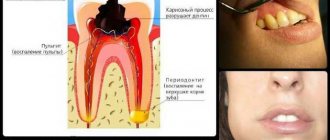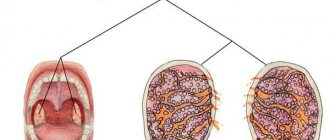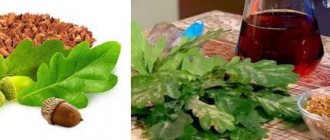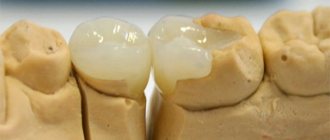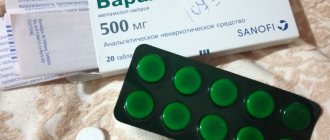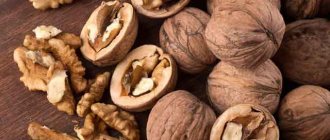People living in countries with temperate climates are already accustomed to the fact that every year in winter or early spring the season of respiratory ailments begins. Changeable weather, sudden temperature changes, and high air humidity create favorable conditions for bacterial or viral damage.
During periods of mass epidemics, not only acute respiratory viral infections with influenza are rampant, but also such a common disease as tonsillitis (acute tonsillitis). With this pathology, the main blow from pathogenic microorganisms is taken by the human throat. It is especially dangerous when a more severe form of tonsillitis occurs - purulent tonsillitis. Inflammatory lesions of the palatine tonsils with the presence of purulent contents are very painful and can lead to a number of serious complications.
Causes
Purulent tonsillitis is a contagious disease, and neither adults nor children are immune from its development. Infection can be acquired both by airborne droplets (through coughing, sneezing, and simply breathing of an infected person) and through household contact (through common objects). The main causative agent of the infection is not a virus, but a bacterium - group A beta-hemolytic streptococcus. However, sometimes, although in quite rare cases, pathology is caused by staphylococci, pneumococci and even adenoviruses. It should be noted that an ideal environment for the proliferation of harmful microflora can be created not only after inhaling cold air or contact with a sick person. Risk factors for the development of this disease are also hypothermia of the throat (for example, consumption of ice water, milk from the refrigerator or ice cream), stress overwork, mechanical damage to the tonsils, and the presence of other inflammatory processes in the body, especially in a state of immunodeficiency.
Clinical picture of purulent tonsillitis (tonsillitis)
In most cases, infection occurs by airborne droplets, but the disease can be transmitted through household contact and nutrition. When the first symptoms of infection appear, therapy should be started immediately. Treatment can be done on an outpatient basis, but a doctor must determine the severity of the disease and prescribe effective medications.
Purulent sore throat is characterized by rapid development. The first symptoms of the disease are high (above 38 °C) temperature with chills, acute pain in the throat, enlargement of the affected tonsils and submandibular lymph nodes. A yellowish purulent plaque accumulates on the palatine tonsils, and above the inflamed surface there are light patches of pus, which are called lacunar plugs. The throat lesion is clearly visible upon visual examination.
On the third day of illness, the temperature usually decreases and the intensity of pain when swallowing decreases. Patients often mistakenly believe that the healing process has begun and stop treatment. It is absolutely impossible to interrupt therapy, since pus remains on the tonsils and lacunae, to remove which it is necessary to carry out therapeutic measures in full.
Symptoms
Like any infectious-bacterial lesion of the body, purulent tonsillitis has its own incubation period: from 2 to 5 days. The disease develops rapidly. On the first day, a person only feels discomfort in the throat during swallowing movements. But already on the second day the symptoms become more pronounced. The body begins to fight the infection: chills, fever appear, and body temperature rises to 39–40°C. The patient experiences weakness, headache, aching joints, and loss of appetite. The sore throat becomes constant, and often it is not even associated with swallowing. The cutting pain in the throat is so strong that it is unbearable to simply swallow saliva. The mandibular lymph nodes become inflamed, increase in size, and upon palpation their swelling is felt. The mucous membrane of the back wall of the pharynx swells, the palatine tonsils turn red, and a purulent yellow-white coating appears on them.
Pustules may look different depending on the form of the disease. So, with follicular purulent tonsillitis, a small rash or spots similar to cereal grains are observed. And in the lacunar form of the disease, lacunae (depressions inside the tonsils, similar to winding canals) are affected by infection. Yellow-white cloudy exudate fills these “craters” and, if treatment is ignored, can aggravate the situation - form dense purulent plugs in the lacunae.
Given the complexity of the pathology, therapeutic measures must begin at its first symptoms. It is unacceptable to refuse treatment in order to avoid the development of concomitant ailments - laryngitis, otitis media, sinusitis. In addition, purulent tonsillitis can cause a more severe complication. Pathological fusion of purulent foci on the tonsils often leads to abscesses, which provokes infection into the skull, inflammation of the meninges and, as a consequence, the occurrence of meningitis.
Treatment of purulent tonsillitis in adults
It is well known that the body of an adult is already fully formed and adapted to negative external influences. A strong immune system is able to cope with the destruction of harmful bacteria on its own. However, almost every person inevitably encounters some kind of disease throughout his life. The presence of long-term pathological foci in the body (for example, dysbiosis, sinusitis, dental caries) significantly weakens the immune system and increases the risk of contracting purulent tonsillitis many times over.
Unfortunately, a distinctive feature of the course of this disease in adults is that many initially ignore the treatment process. The reluctance to undergo treatment is explained by the fact that some people live by the principle “it will go away on its own,” so they endure the disease, as they say, “on their feet.” Such a frivolous attitude towards purulent sore throat in most cases leads to the transformation of the acute form of the pathology into the chronic stage, not to mention the development of complications. Otolaryngologists emphasize that there is no way to get rid of this dangerous disease without medical intervention.
The first thing the doctor will do after diagnosing a purulent sore throat is prescribe antibiotics. Today, these medications are the most effective drugs for treating such a serious disease. Antibacterial drugs from the following groups are most successful in combating infectious pathogens of purulent tonsillitis in adults:
- penicillins (Amoxicillin, Amoxiclav, Augmentin, etc.);
- cephalosporins (Ceftriaxone, Suprax, Kefexin, etc.);
- macrolides (Erythromycin, Azithromycin, Macropen, etc.).
Simultaneously with antibiotic therapy, symptomatic treatment is carried out to alleviate the general condition of the patient: regular gargling with solutions of Furacilin or Miramistin, use of Hexoral, Proposol or Ingalipt inhalation sprays. Pus from the tonsils can be easily removed with Lugol's solution using a cotton swab. As a rule, if all the recommendations of the attending physician are strictly followed, recovery of an adult occurs in 7 to 10 days.
How to treat purulent sore throat
Treatment of purulent sore throat in adults is carried out using local and general therapy, the basis of which is antibacterial drugs.
After receiving the results of bacteriological culture, due to an increase in the proportion of antibiotic-resistant strains, correction of the initial therapy may be required.
Antibiotics for purulent sore throat in adults are prescribed to eradicate the infectious pathogen and reduce the risk of rheumatic fever.
The widespread and not always justified use of antibacterial drugs has led to a significant increase in the number of antibiotic-resistant bacteria. The choice of drug should be made strictly by a doctor. Self-treatment can lead not only to flora resistance, but also to a number of complications, adverse reactions, or the transition of an acute process to a chronic one.
Streptococcus pyogenes retained sensitivity to beta-lactam antibiotics. In some regions of the world, resistance to macrolides exceeds 30%.
Amoxiclav is one of the drugs of choice for the treatment of sore throat.
The drugs of choice for purulent sore throat are:
- Amoxicillin;
- Amoxicillin/clavulanate (Amoxiclav);
- Ceftriaxone.
Amoxicillin has high bactericidal activity against group A beta-hemolytic streptococcus. A narrow, targeted spectrum of action, good tolerability, minimal impact on the normal microflora of the gastrointestinal tract and low price are the main advantages of this drug.
But Amoxicillin is not always effective enough. This is due to the persistence of Staphylococcus aureus and Haemophilus influenzae on the mucous membrane of the upper respiratory tract, which, by producing the enzyme beta-lactamase, destroy the antibacterial substance of the drug. Therefore, in the treatment of acute purulent tonsillitis, they often resort to the prescription of protected penicillins, which include Amoxiclav.
Amoxiclav, in addition to semisynthetic penicillin (amoxicillin), contains a beta-lactamase inhibitor - clavulanic acid. Clavulanic acid itself does not have an antibacterial effect, but it prevents the inactivation of amoxicillin, thereby expanding its spectrum of activity.
The spectrum of action of cephalosporins is wider, which negatively affects the intestinal microflora. This once again proves the importance of preliminary consultation with a specialist before starting to take any antibacterial drug.
In patients with hypersensitivity to penicillins, cross-allergic reactions with cephalosporin antibiotics are possible.
For purulent tonsillitis, Sumamed is often prescribed
Alternative drugs are:
- Azithromycin (Sumamed);
- Cefotaxime;
- Lincomycin;
- Clarithromycin.
Macrolides are prescribed to persons with allergic reactions to penicillins or other beta-lactam antibiotics.
Sumamed is a broad-spectrum bacteriostatic antibiotic from the macrolide-azalide group. Azithromycin, which is the active substance of the drug, inhibits the synthesis of microbial cell protein, slows down the growth and reproduction of bacteria. Sumamed's activity extends to gram-positive, gram-negative, anaerobic and intracellular microorganisms.
How long antibiotic therapy lasts and which drug is best to take is decided individually depending on the severity of the condition.
After receiving the results of bacteriological culture, due to an increase in the proportion of antibiotic-resistant strains, correction of the initial therapy may be required.
The widespread and not always justified use of antibacterial drugs has led to a significant increase in the number of antibiotic-resistant bacteria. The choice of drug should be made strictly by a doctor.
With timely and adequate treatment, purulent tonsillitis occurs within 7–10 days.
Dynamic observation by a doctor also plays an important role for timely diagnosis of possible complications.
To normalize the intestinal microflora or prevent dysbiosis after antibacterial therapy, drugs containing lacto- and bifidobacteria (Acipol) are prescribed.
Non-steroidal anti-inflammatory drugs (Paracetamol) are used to reduce body temperature. Also, when you have a fever, it is advisable to drink plenty of fluids to replenish your fluid balance.
How to treat your throat?
Local therapy in the form of rinses, inhalations, tablets and lozenges is recommended.
Positive reviews confirm the effectiveness of Tantum Verde spray. The medicine has anti-inflammatory, analgesic and antiseptic effects.
Antibiotic therapy should be carried out in combination with local treatment, for example using Tantum Verde spray
Local antimicrobial drugs play an important role. The drug Grammidin neo contains antibacterial and antiseptic components - gramicidin C and cetylpyridinium chloride. And Grammidin neo with anesthetic additionally contains oxybuprocaine, which helps relieve pain and discomfort in the throat.
A local broad-spectrum antimicrobial agent is Streptocide, which can be applied to the affected tonsils in the form of an ointment. Sulfanilamide in the drug acts against gram-positive, gram-negative, anaerobic bacteria and allows you to get rid of purulent sore throat in the shortest possible time.
Among folk remedies, in addition to the main treatment, a compress of vodka is often made at home on the neck area. Before carrying out the procedure, you should consult your doctor, since in some cases the use of this method is contraindicated.
Treatment of purulent tonsillitis in children
Children are more susceptible to this disease than adults. This is due to the inability of the child’s body’s incompletely formed immune system to effectively resist aggression from pathogenic bacteria. According to statistics, the disease most often affects children aged 3–10 years. The fact is that in kindergartens and school educational institutions sanitary and hygienic rules are not always observed. In addition, children are constantly in contact with their peers, among whom there may be an infected child. In addition to the entire spectrum of characteristic symptoms of purulent tonsillitis, it is possible that sick children may experience nausea, vomiting, and spread of pain to the hearing organs. The severity of the pathology is such that sometimes the child needs to be hospitalized in a hospital.
The principle of treating purulent childhood tonsillitis is the same as for treating an adult. First of all, antibacterial drugs are prescribed, mainly penicillins or macrolides. Cephalosporins are rarely used due to many side effects, contraindications and age restrictions. In addition, many young patients are not able to swallow large tablets and capsules, so doctors prefer to prescribe medications for children in a more convenient dosage form.
In particular, the drug Flemoxin Solutab based on amoxicillin has high therapeutic activity. Its tablet, which has a pleasant lemon-tangerine taste, can be chewed or dissolved in water. The antibiotic Gramicidin (lozenges) and the antibacterial throat spray Bioparox have proven themselves to be effective. You should also highlight a medicine from the penicillin group Amoxiclav, produced in powder for the preparation of a suspension. When treating children, antipyretics and probiotics are additionally prescribed to maintain normal microflora in the gastrointestinal tract, as well as gargling and inhalation, mainly with herbal medicines. With proper therapy, the child usually makes a full recovery within 2 weeks.
Tablets for the treatment of purulent sore throat
In addition to antibiotics taken as the main remedy, symptomatic drugs from different groups are prescribed in tablets. Their task is to reduce the phenomena of local inflammation, pain relief, and reduce the symptoms of intoxication and fever.
Local dissolving tablets
Faringosept. It is made on the basis of an antimicrobial substance that is active against most gram-positive bacteria, which for the most part cause purulent sore throat.
Lysobacter. Contains an analogue of the natural antiseptic (lysozyme), which is part of human saliva, and the vitamin pyridoxine, which has an anti-aphthous effect (prevents the appearance of ulcers in the oral cavity and on the tonsils).
Strepsils. The composition includes a local antiseptic, which not only fights microorganisms, but also soothes irritation in the throat.
These tablets should be taken half an hour after meals, slowly dissolving them. At this time, the amount of saliva produced decreases, which somewhat weakens the effectiveness of local agents due to their accelerated rinsing from the surface of the tonsils.
Antipyretics
Non-steroidal anti-inflammatory drugs for purulent sore throat are prescribed to combat fever. These include:
- Paracetamol,
- Diclofenac,
- Nimesulide,
- Ibuprofen.
For hyperthermia caused by sore throat, it is undesirable to use Aspirin, especially in children.
Antihistamines
To reduce intoxication and level out immune disorders, antihistamines are prescribed: Suprastin, Tavegil, Cetrin.
Antifungal agents
For patients with weakened immune systems, the doctor may consider it advisable to prescribe antifungal drugs (Ketoconazole or Nystatin) to prevent candidiasis that occurs during massive antibacterial therapy.
Immunomodulators
In the acute period, and also as a prophylactic agent, immunomodulators in tablets are prescribed: Ribomunil, Broncho-munal.
Features of antibiotic treatment
Due to the hurricane nature and rapid manifestation of purulent tonsillitis, antibacterial therapy begins immediately. In this case, broad-spectrum medications are prescribed, which include antibiotics from the category of penicillins, cephalosporins and macrolides. These drugs can not only destroy a wide variety of bacteria, but are also highly effective against the main causative agent of the disease - streptococcal infection. However, a throat swab is taken from the patient for laboratory examination under a microscope. If there is no positive result in the first days of the disease, the treatment must be adjusted: based on biological culture data, the doctor selects an antibiotic that specifically acts on a particular harmful microorganism.
A sick person, regardless of age, must follow a very important rule: antibacterial drugs must be taken for as long as the doctor says. Even if relief occurs, these medications should not be interrupted. The fact is that antibiotics have a cumulative effect: in order to completely destroy bacteria, the active components of these drugs must accumulate in the body and create the necessary concentration. Typically, antibiotic therapy lasts a minimum of one week and a maximum of 10 days.
What to gargle with?
Rinsing has a local therapeutic effect on the affected surface of the throat, and therefore should be carried out in combination with the main treatment - taking antibiotics. The effectiveness of these procedures is obvious: disinfection and disinfection of the oral cavity, mechanical removal of purulent plaque, reduction in the intensity of the inflammatory process. You just need to do the rinsing correctly. Firstly, the healing solution should not be cold or hot, but at room temperature. Secondly, in order for the medicinal substances to get directly to the source of the infectious lesion, it is necessary to keep your head slightly tilted back during the procedure. Thirdly, you should gargle for at least 30 seconds: in the first days of illness, every hour. In the future, as the condition improves, the frequency of the procedure can be reduced to 5 times a day.
The most effective topical agents for purulent sore throat are solutions of Furacilin, Miramistin, Chlorhexidine, Iodinol. They quite effectively wash away accumulations of fibropurulent plaque from the tonsils. As a disinfectant, it is recommended to use Dimexide (a teaspoon per glass of water), weakly diluted solutions of potassium permanganate or hydrogen peroxide. Among phytotherapeutic agents, solutions based on calendula, yarrow and chamomile (Rotocan), and eucalyptus leaves (Chlorophyllipt) should be highlighted. Don’t forget about folk medicine: decoctions of St. John’s wort, sage, oregano, and horsetail have long been successfully used to gargle for this infectious disease.
Treatment with traditional medicine
Traditional healers will also tell you how to quickly cure a purulent sore throat in a home hospital. Folk wisdom has accumulated a rich arsenal of effective recipes, tested over years and decades, and, moreover, absolutely harmless and accessible.
- Regular beets effectively relieve the purulent symptoms of a sore throat. The peeled root vegetable is grated and poured with boiled water in a one to one ratio. This remedy is infused for about 6 hours, then filtered and used to gargle several times a day. At the same time, specialists draw attention to the fact that such a folk medicine effectively helps with purulent, acute tonsillitis, but it does not act on chronic tonsillitis.
- At the very initial stage of the disease, when the patient feels like there are hedgehogs in his throat, an ordinary lemon will help cope with the disease. It is cut into slices, which are chewed along with the peel several times a day. For greater effectiveness, you can squeeze lemon juice and drink it in small sips throughout the day. Experts point out that at a progressive stage, when all the tonsils are affected by ulcers, this remedy is unlikely to help.
- For those who do not have a history of allergies to bee products, it is best to use propolis to treat purulent forms of sore throat. You can simply chew it in your mouth, or you can prepare a propolis tincture for gargling or irrigating the throat. 15 grams of propolis are poured with 80 ml of alcohol and left for 24 hours. The medicine must be thoroughly mixed until smooth. a few drops of the finished tincture in half a glass of warm water - and a ready-made rinse. You can simply use this tincture to treat diseased tonsils with cotton swabs, but you can also pour the finished medicine into an empty bottle of inhalipt or chlorophyllipt and irrigate the diseased tonsils several times a day.
How to treat purulent tonsillitis in home therapy is chosen by the doctor together with the patient. The basic rule for the effective treatment of a purulent process in the throat is the inadmissibility of self-medication, therefore any traditional medicine that is planned for the treatment of tonsillitis must undergo prior approval and obtain the approval of a qualified specialist. Only in this way can the risk of complications be minimized and the terrible consequences of purulent tonsillitis avoided.
Inhalations
For most people, this procedure is primarily associated with inhaling steam through the mouth, covered with a towel. So, hot inhalations for purulent sore throat are strictly prohibited. Exposure to excessive heat on the site of a bacterial lesion in the throat can cause purulent exudate to break through, enter the bloodstream and penetrate other parts of the body.
But if by inhalation we mean the use of a special nebulizer device, then for this pathology such a procedure is quite possible. For a nebulizer, liquid pharmaceutical preparations are most often diluted with saline in a 1:1 ratio. After narrowly targeted spraying into the inflamed area, the smallest droplets of medicine are instantly absorbed into it and have a rapid bactericidal and disinfectant effect. In addition to the already mentioned Furacilin, Miramistin, Rotokan, solutions of Gentamicin, Dioxidin, Tonsilgon have proven themselves well in spray inhalations. The use of nebulizers as inhalation devices greatly facilitates well-being and speeds up recovery from purulent tonsillitis.
Home remedies for treating sore throat
Tincture of calendula
To 1 tbsp. l. Calendula flowers need to pour a mug of boiling water. Cover with a plate and leave for 30 minutes. Then, after straining, gargle the sore throat with calendula decoction every 60 minutes.
Hydrogen peroxide
Can be used as a rinse to quickly get rid of the inflammatory process. Dilute 1 tbsp in a glass of warm water. spoon of peroxide, rinse. In addition to the anti-inflammatory effect, peroxide helps remove plaque from the tonsils.
Propolis
Natural propolis is used for treatment. It can be bought at a pharmacy. Propolis should be sucked or chewed after each meal and gargling. Take no more than 1 tsp per day. propolis. Chew or suck one serving for half an hour.
Lemon
In the presence of this disease, it is recommended to take lemon in any form, especially for purulent sore throat. It is contraindicated only in case of individual intolerance to the product. Methods of administration:
- tea (brew tea, throw in a few slices of lemon, let it brew for 5-10 minutes and drink, drink every 3 hours);
- lemon-honey mixture (mix 1 tablespoon of honey and freshly squeezed lemon juice, dissolve in your mouth).
You should be aware that with severe inflammation of the throat, lemon can irritate the mucous membranes and cause pain. In this case, therapy should be abandoned.
Garlic for inhalation
Peel one head of garlic and cut into slices. Place in a saucepan with a liter of water and bring to a boil. Dissolve 1 tsp. soda Do inhalations three times a day for 20 minutes.
Decoction of aspen bark
To prepare, you need to have aspen bark on hand. Moreover, its thickness should be from 2 cm or more. The bark is crushed and filled with water (the proportion is taken to be one to two). Boil for 15 minutes over low heat. When the broth has cooled, use it to gargle after each meal. Be sure to gargle at night.
Oregano decoction
It is advisable to take the decoction only warm. Drink one and a half glasses every six hours to relieve inflammation and get rid of hoarseness.
Lingonberry decoction
In order for the treatment of purulent sore throat in adults at home to end quickly and without complications, you need to take this decoction. You will need lingonberry fruits and leaves. Pour water in equal proportions and bring to a boil. Leave for 40 minutes, then drink.
Read! In our article you can find out how to quickly and effectively get rid of sore throat in children.
Fruit drinks and jelly
Another popular option to cope with a sore throat. Jelly based on red berries is suitable for drinking: raspberries, currants, cranberries.
Important! You should not drink more than one liter in one day. It is advisable to take lingonberry decoction instead of tea or other warm liquids that are recommended for general systemic treatment.
Other options for gargling solutions:
- Dilute potassium permanganate powder with water to a pale pinkish color.
- Buy calendula tincture at the pharmacy (dilute no more than 1 teaspoon of infusion in a mug of water). The product is not suitable for children.
- Chamomile solution (1 teaspoon of chamomile flowers is brewed with a glass of boiling water).
- Iodine. In this situation, you should take up to 8 drops of iodine per glass of boiling water.
- Salt and soda. The most popular solution for rinsing the mouth during illness. Dissolve 15 g of salt and soda in a glass of water.
These are the main options for treating purulent sore throat in adults at home. Remember about preventive measures: hardening and increasing the overall level of immunity. This will prevent the development of such a serious and complex disease.
Treatment at home
Despite the bacterial origin of this disease and the high increase in the spread of infection, purulent sore throat is usually treated at home. The patient is sent to a hospital only if the patient’s condition is very serious, requiring resuscitation (for example, swelling of the pharynx), as well as during pregnancy. To recover faster, you must follow the rules of home therapy recommended by your doctor. The patient is prescribed strict bed rest; he must be isolated from the rest of the family. The room in which it is located must be periodically ventilated and regularly wet cleaned. In addition to the mandatory use of antibiotics and local therapy, a sick person will need to drink a lot of fluids. Drinking should be at moderate room temperature. It is recommended to give preference to compotes or fruit drinks with a high content of vitamin C: from cranberries, lingonberries, black currants, rose hips. Increasing the drinking regime accelerates the removal of bacterial toxins from the body, moisturizes the mucous membrane of the throat, and replenishes fluid loss caused by high temperature. Of course, any physical activity is prohibited for the patient.
Treatment of the disease
It is necessary to treat purulent sore throat in an adult under the close supervision of a physician. If this is done untimely and incorrectly, serious complications may occur, which sometimes lead to death. Acute tonsillitis (so-called sore throat) cannot be treated only with folk remedies in any case.
During the period of illness, severe intoxication of the body is observed, so the sick person must remain in bed. It is necessary to limit contact with people and maintain vocal rest.
At this time, the mucous membrane is inflamed, as a result of which you need to take soft and warm food, and in order to increase the body's immunity, it should contain as many vitamins as possible.
Warm, plentiful drinking promotes the rapid elimination of toxins. During illness, it is recommended to drink:
- milk with honey;
- fruit and vegetable fruit drinks;
- green tea with lemon;
- non-carbonated alkaline mineral water.
Treatment consists of rinsing and irrigating the mouth with various antiseptic solutions, inhaling medications, taking tablets or administering medications by injection.
It is not possible to cure purulent sore throat without antibiotics. They are the basis of all treatment. Only antibiotics can destroy microbes - streptococci and staphylococci that cause this disease. For purulent sore throat, the attending physician in most cases prescribes antibiotics of various groups.
The most effective and efficient antibiotics of the penicillin group are the following tablets:
- Amoxicillin;
- Amoxiclav;
- Ampiox;
- Oxacillin.
Often, the doctor prescribes macrolide antibiotics - Rulid, Sumamed, Azitrox. They have a positive effect on the course of treatment. In severe cases of the disease, cevalosporins are prescribed - fourth-generation drugs for purulent tonsillitis, which include Maxicef.
Fluoroquinolones will help cure a sore throat and put the sick person back on his feet in a short time. Such antibiotics are Levofloxacin, Ofloxacin, Pefloxacin. The form in which these funds will be used is decided solely by the doctor. These can be tablets or injections. In very severe cases of the disease, preference is given to injections. Basically, the course of treatment lasts from 5 to 10 days. If necessary, it will be extended.
Nutrition for purulent sore throat
Loss of appetite is one of the main symptoms of a weakened body with this disease. Due to pain in the throat, especially when swallowing, the patient sometimes cannot even look at food. But it is still necessary to eat food to support the body’s strength in the fight against infection. You just need to make adjustments to the diet of the sick person. Food should be of a gentle, soft consistency, low-traumatic, in order to reduce pain during swallowing movements. The following foods and dishes are best suited for feeding the patient: porridge, chicken broth, mashed potatoes, omelettes, boiled vegetables (pumpkin, zucchini, cauliflower, beets, carrots), baked fruits, liquid honey. Such food is easily digestible and does not burden the liver. During illness, the filtering organ works in enhanced mode, processing and removing toxic substances released by bacteria from the body. And, of course, do not forget about drinking plenty of liquid.
Thus, purulent tonsillitis is a severe contagious disease that will not go away on its own. In addition, the patient must understand that he cannot be cured in one day. Therefore, the main thing is to be patient, do not skip taking medications, and follow all prescribed procedures. Then the positive dynamics of treatment will not be long in coming.
Source
